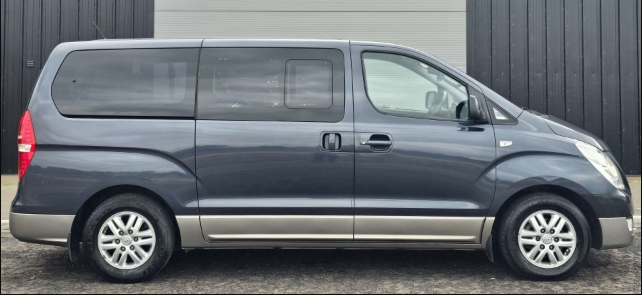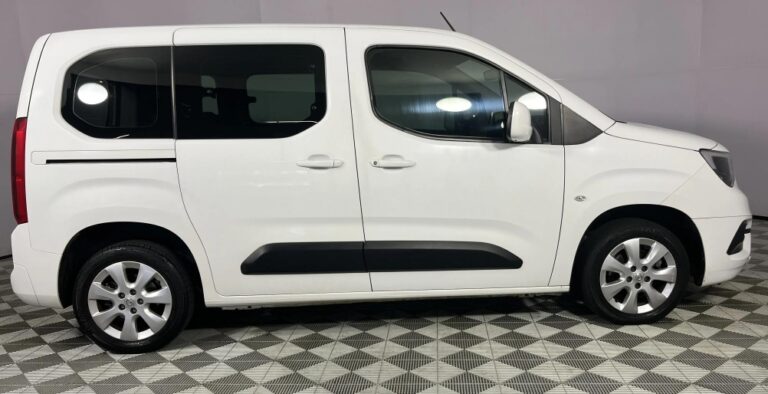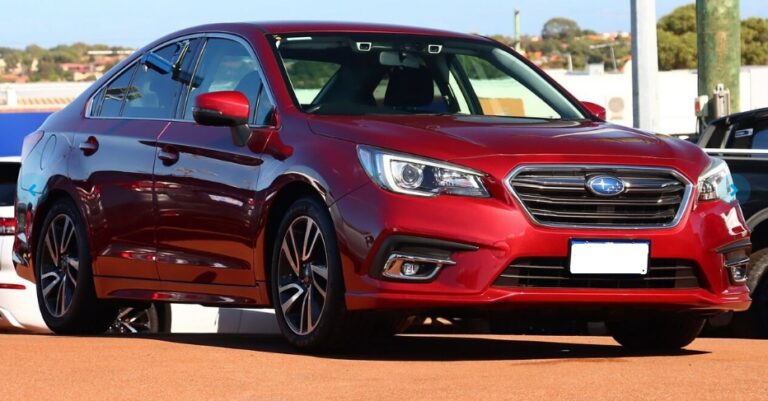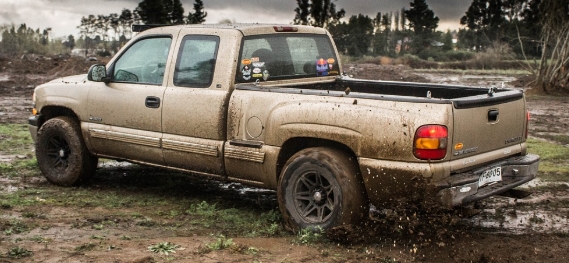The Gentle Giant: Charting the Evolution of the Hyundai i800
In the ever-shifting landscape of the automotive world, where trends favor sleek crossovers and compact SUVs, some vehicles stand as monuments to pure, unadulterated utility. They are the unsung heroes of large families, taxi fleets, and airport transfer services. Among these, the Hyundai i800 carved out a unique and enduring legacy. For over a decade, it was the go-to choice for those who prioritized space, practicality, and value above all else. This is the story of its evolution, from its global origins as the Hyundai Starex to its final days as a beloved, if dated, titan of the people-moving world.
The Genesis: A Global Platform (2007)
To understand the i800, one must first look to its global counterpart: the second-generation Hyundai Starex (codenamed TQ), which launched in 2007. This was Hyundai’s ground-up redesign of its popular large van and MPV, replacing the first-generation model which had been a licensed version of the Mitsubishi Delica. The new Starex was a significant leap forward, boasting a more modern design, improved safety features, and a powerful new diesel engine.
Its core architecture was deliberately traditional and robust. It featured a rear-wheel-drive layout with a longitudinally mounted engine, a configuration more akin to a commercial vehicle than a typical car-based MPV. This design choice was crucial to its character, affording it excellent towing capacity and a durable, workhorse-like feel. The platform was engineered for versatility, serving as the basis for the Grand Starex passenger van, the H-1 cargo van, and, for specific markets like the United Kingdom and Europe, the Hyundai i800.
.
RepairSurge Online Repair Manuals Replace Bulky Books With Reliable Digital Information!
Faster And Cheaper Than Traditional Printed Manuals, Users Get Instant Access To The Repair Information They Need For Any Car, Truck, Van or SUV:
.
The Arrival in Europe: The i800 is Born (2008-2017)
In 2008, Hyundai introduced this new people carrier to the UK market, rebranding it under its new “i” nomenclature. Following the i10, i20, and i30, the “i800” name was intended to create a cohesive brand identity. The vehicle immediately found its niche. While rivals like the Ford Galaxy and Volkswagen Sharan were becoming more car-like, the i800 was unapologetically van-based, and this was its greatest strength.
Engine and Drivetrain: The i800 launched with a single, formidable engine option: a 2.5-litre CRDi four-cylinder common-rail turbo diesel. This powerplant was the heart and soul of the vehicle throughout its entire production run. In its initial Euro 4 compliant form, it produced a healthy 168 bhp (170 PS) and a substantial 392 Nm of torque. This gave the large vehicle surprisingly brisk performance and the muscle needed to carry eight passengers and their luggage without strain.
Initially, this engine was paired with a five-speed automatic transmission. A five-speed manual gearbox was also available, though the automatic proved to be the more popular choice for the kind of stop-start and long-distance cruising duties the i800 was often subjected to. Around 2011, the manual gearbox was upgraded to a more efficient six-speed unit, improving fuel economy and motorway refinement.
Models and Trim Levels (2008-2017): A Tale of Two Tiers
Hyundai kept the i800 range refreshingly simple, focusing on value and standard equipment. For the majority of its pre-facelift life, the line-up consisted of two primary trim levels:
- Style: This was the entry-point, yet it was far from spartan. Standard equipment from launch was generous and included:
- Eight seats in a 2-3-3 configuration.
- 16-inch alloy wheels.
- Dual-zone air conditioning with separate controls for the rear passengers.
- Privacy glass for the rear windows.
- Electric front and rear windows (the rear-most side windows popped out manually).
- Twin sliding rear doors for easy access.
- A CD player with MP3 compatibility and auxiliary/USB inputs.
- Reversing sensors.
- Premium: Building on the Style’s solid foundation, the Premium trim added a touch of luxury without compromising the vehicle’s core purpose. The key upgrades typically included:
- Full leather seat upholstery.
- Heated front seats.
- An automatic dimming rear-view mirror.
- Climate control in place of standard air conditioning on later models.
- Sometimes, subtle exterior trim differences like chrome detailing.
Throughout this period, there were minor updates and special editions, but the core Style/Premium structure remained. The focus was clear: provide a well-equipped, immensely spacious, and reliable vehicle at a price point significantly lower than rivals like the Volkswagen Caravelle or Mercedes-Benz V-Class. Its only direct competitor in the van-based MPV segment for value was arguably the SsangYong Turismo (formerly the Rodius).
The Mid-Life Renaissance: A Modern Facelift (2018-2021)
By the late 2010s, the i800’s interior and exterior were beginning to show their age. While its practicality was timeless, its dashboard design and lack of modern infotainment were lagging behind. In 2018, Hyundai gave the i800 (and its global Starex sibling) a comprehensive facelift that significantly modernised its appearance and onboard technology.
Exterior Changes: The most dramatic change was at the front. The i800 adopted Hyundai’s contemporary design language, swapping its old horizontal grille for the brand’s signature “cascading” hexagonal grille. This was flanked by new, sleeker headlights and a reprofiled bumper, giving the vehicle a much more sophisticated and less utilitarian look that aligned it with the rest of the Hyundai family. The rear remained largely unchanged, save for minor tweaks to the light clusters.
Interior and Technology Overhaul: The transformation inside was even more significant. The old, dated dashboard was completely replaced with a modern, horizontally-oriented design. The centrepiece was a new “floating” 7-inch touchscreen infotainment system. This single upgrade brought the i800 into the modern era, incorporating:
- Apple CarPlay and Android Auto for seamless smartphone integration.
- DAB digital radio.
- A reversing camera display.
- Satellite navigation (on higher-spec models).
The instrument cluster and steering wheel were also updated, borrowing parts from Hyundai’s passenger car range. While the hard-wearing plastics remained, the overall ambiance and usability of the cabin were dramatically improved.
Technical Updates: Under the bonnet, the trusty 2.5-litre CRDi engine was updated to meet the stricter Euro 6 emissions standards. This required the addition of a Selective Catalytic Reduction (SCR) system, meaning owners now had to top up an AdBlue tank. Power output remained at 168 bhp (170 PS), but the torque was boosted to an impressive 441 Nm, making the facelifted model feel even more effortless under load. The engine continued to be paired with the five-speed automatic or a six-speed manual gearbox.
Post-Facelift Trim Levels (2018-2021):
The trim structure was slightly revised to reflect the new standard equipment.
- SE: The new entry-level model inherited the role of the old “Style” trim but came with a much higher specification as standard. This now included the 7-inch touchscreen with Apple CarPlay/Android Auto, DAB radio, cruise control, a reversing camera, and Bluetooth connectivity.
- Premium: The top-tier model continued to build on the SE’s features, adding satellite navigation to the infotainment system, full leather upholstery, heated front seats, and automatic climate control.
This facelift was a masterstroke, extending the i800’s lifespan by injecting much-needed modern technology and style into its fundamentally sound and practical package. It allowed the i800 to remain a competitive and highly compelling option in its segment right up to the end of its production.
The End of an Era and a Futuristic Successor (2021)
After a remarkable 13-year run in the UK, production of the Hyundai i800 ceased for European markets in 2021. The platform, despite its successful facelift, was ultimately a product of the mid-2000s and could no longer keep pace with evolving safety standards and emissions regulations without a complete-ground up redesign.
Hyundai’s replacement, the Staria, which launched globally in 2021, signalled a radical departure. Where the i800 was a traditional, rear-wheel-drive workhorse, the Staria is a futuristic, front-wheel-drive MPV built on a modern passenger car platform. Its “spaceship” design, luxurious lounge-like interior, and advanced driver-assistance systems represent a completely different philosophy, aimed squarely at the premium end of the market.
The Lasting Legacy of the i800
The Hyundai i800’s story is one of consistency and steadfast purpose. It was never the most stylish, the most dynamic, or the most technologically advanced MPV. Instead, it was arguably the most honest. Its evolution was not one of radical change, but of thoughtful updates designed to keep a fundamentally excellent formula relevant.
From its launch in 2008 to its final model in 2021, it remained true to its core principles: offering maximum space for eight people and their luggage in a reliable, powerful, and affordable package. Its rear-wheel-drive, van-based toughness made it a dependable workhorse for businesses, while its sheer size and standard features made it an unbeatable proposition for the largest of families. The 2018 facelift ensured it bowed out with modern connectivity, bridging the gap between old-school utility and contemporary needs.
Today, the Hyundai i800 remains highly sought-after on the used market, a testament to its durability and enduring appeal. It stands as a reminder of a time when practicality was king, and for thousands of owners, this gentle giant was, and still is, the undisputed champion of space.







